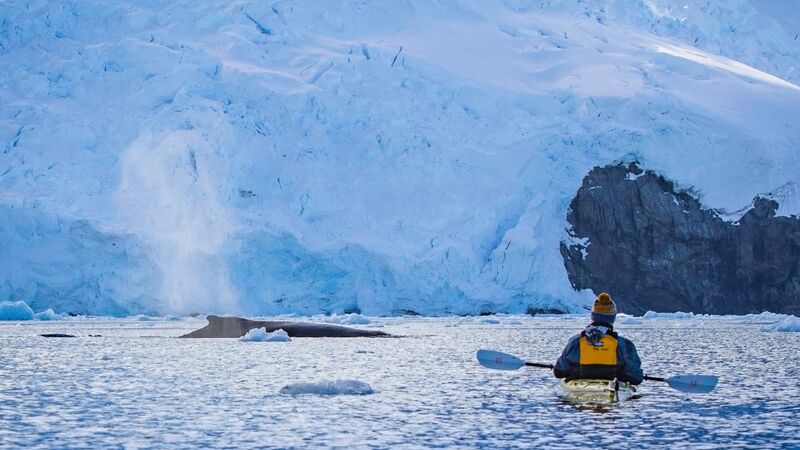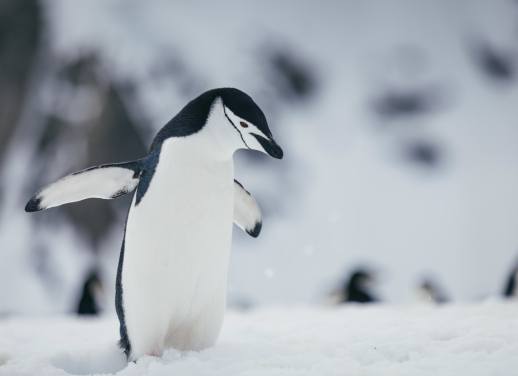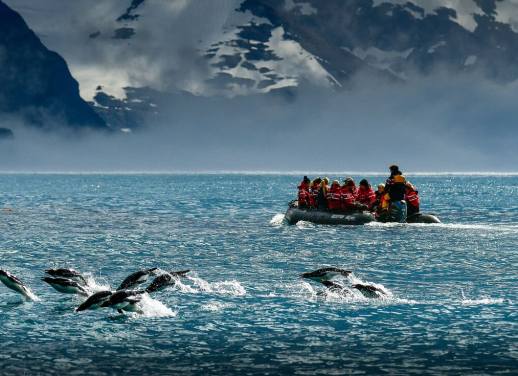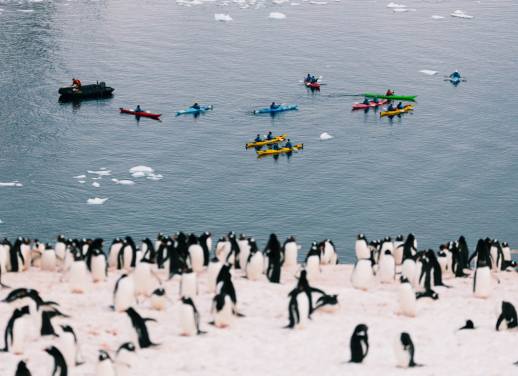Ever wondered what it would be like to explore Antarctica with a team of whale experts? We have. That’s why we’ve partnered with WWF-Australia to run two groundbreaking expeditions to the ends of the earth.
Imagine crossing the Antarctic circle with a team of scientists from the World Wildlife Fund – Australia. These experts are the icing (pun intended) on the cake when it comes to immersing yourself in a truly Antarctic experience; they can help you identify whales and wow you with facts, all while conducting vital research into these incredible giants of the ocean.
We sat down with Chris Johnson, WWF’s Global Lead for Protecting Dolphins and Whales, to share what you can expect on this one-in-a-lifetime expedition.
What sort of things will people see on this expedition?
Antarctica is epic. It’s the largest wilderness on Earth with over 9,000 marine species – and even more being discovered each year.
The Antarctic circumpolar current flows clockwise from west to east around the continent and runs parallel north up the Western Peninsula. This means its icy waters are very productive and abound with wildlife, from humpback whales to penguins and seals, feeding on huge swarms of their prey – krill. It’s truly a sight to behold.
We will see a range of species such as humpback whales, Antarctic minke whales and killer whales. Humpbacks undertake a yearly migration to the Antarctic, which is essential to feed on krill, rest and add the necessary energy stores to sustain them for their next journey to their tropical breeding grounds. But we may see other species if we are lucky, such as Antarctic blue whales (the largest animal on Earth), sperm whales, southern right whales and fin whales.
We’ll also see a range of other wildlife such as adélie, gentoo and chinstrap penguins, a wide variety of seabirds and a range of seals, like leopard, Weddell and crabeater seals.
At the end of each day, the research team will share updates about our field work and encounters with whales, doing in-depth TED-style talks and sharing video footage from our drone and tag work.
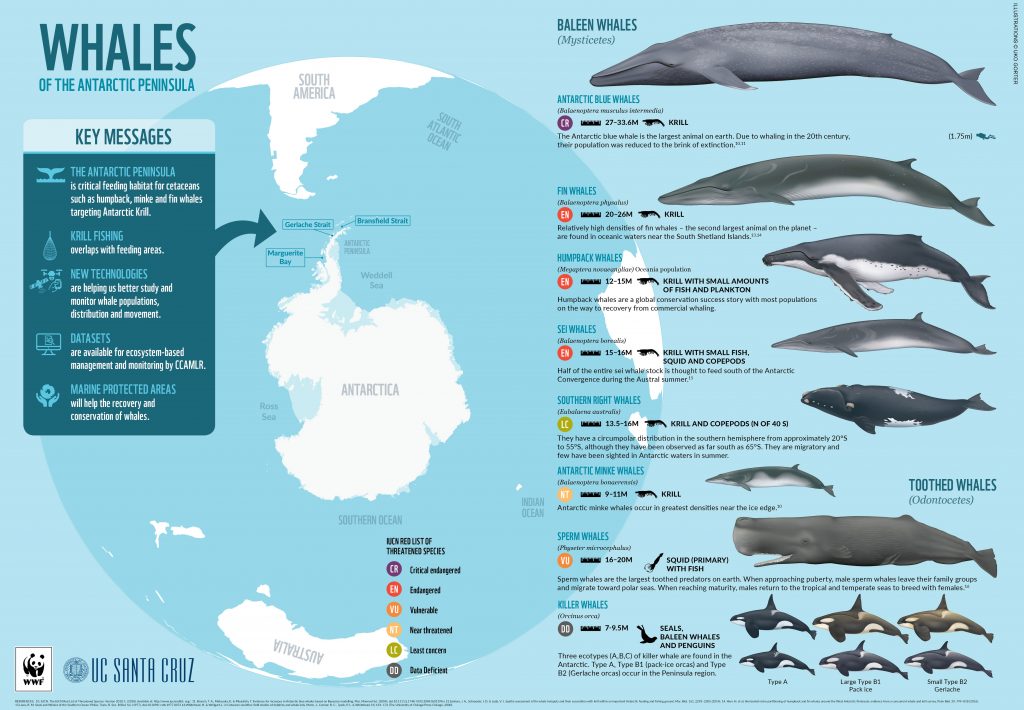
Tell us a bit about the WWF’s whale conservation work in Antarctica.
WWF has been working with partners to conserve whales for over 50 years. Whales are awe-inspiring yet challenging to study in the open ocean. Because of this, their distribution and critical ocean habitats – areas where they feed, mate, give birth, nurse young, socialise or migrate for their survival – are still being discovered. This is why we’ve invested in innovative techniques to better understand the lives of our ocean giants.
New technologies are allowing us to study whales and the ocean in new ways. Over recent years, WWF has supported fieldwork such as using digital tags and drones to better understand how and where whales feed to uncover their favourite hotspots. It gives us a window into their world to understand the health of populations, how they are affected by climate change, and how we might protect their critical ocean habitats worldwide.
Why is whale conservation such important work?
Growing evidence shows that whales are essential to a healthy ocean and planet, so we need these animals to recover and thrive.
Along their migrations, whales fertilise the marine ecosystems they move through and support the marine life inhabiting them. Their faecal plumes boost phytoplankton production, which captures about 40 per cent of all carbon dioxide produced and generates over half of the atmosphere’s oxygen. When they die, whales sink to the seabed, taking massive amounts of carbon out of the atmosphere for centuries. Altogether, over its lifetime, one whale captures the same amount of carbon as thousands of trees.
This means that by restoring whale populations, we can help restore ocean ecosystems and mitigate and build resilience to climate change. It’s helping nature help itself, and all of us who depend on it.
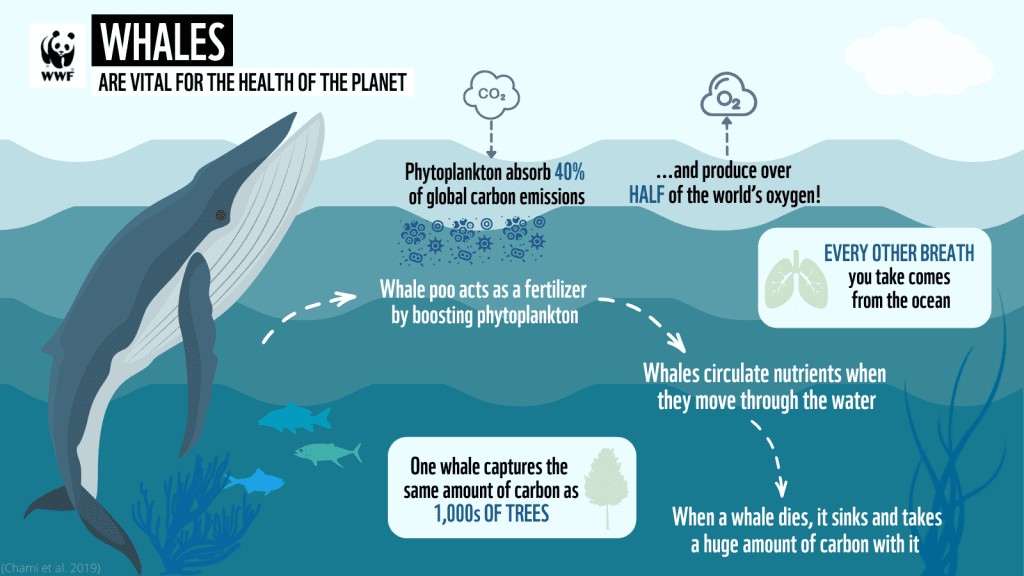
There’s been a lot of talk lately about whether travellers should be going to Antarctica at all. What are your thoughts on that?
Antarctica is the only place on the planet set aside as a reserve for ‘peace and science’. No country owns it, and we must all work together to conserve it.
Collaboration is the spirit of Antarctic science and it’s the most effective way to achieve impact. Across WWF, we have worked with a range of research teams including University of California Santa Cruz, British Antarctic Survey, Australian Antarctic Division, Duke University and other partners such as tourism operators like Intrepid Travel to help gain access to important field sites while sharing the science in action with tourists.
Working with collaborators, we bring this important knowledge to policy makers to protect 30 per cent of the seas around Antarctica by 2030, creating a safety net for wildlife.
Over the last 20 years, I’ve studied and documented whale populations around the world and the high seas. However, nothing quite beats working among the Antarctic giants while surrounded by mountains rising from the sea and navigating colourful icebergs of all shapes and sizes along the Peninsula. The scale of nature here is overwhelming and inspirational.
Antarctic travel is an opportunity to share this very special place with the public – and it inspires those who are lucky enough to visit it.
See what WWF-Australia scientists got up to in Antarctica on the Ocean Endeavour in 2023. Get a taste of it yourself on Intrepid’s WWF Giants of Antarctica and WWF Journey to the Circle and Giants of Antarctica trips.

